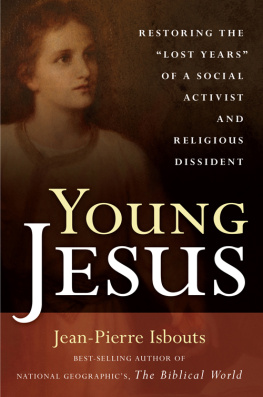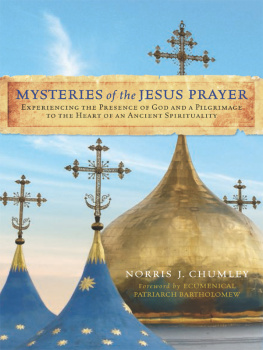Published by the National Geographic Society
1145 17th Street N.W., Washington, D.C. 20036
Copyright 2012 Jean-Pierre Isbouts. All rights reserved. Reproduction of the whole or any part of the contents without written permission from the publisher is prohibited.
eISBN: 978-1-4262-0978-9

The National Geographic Society is one of the worlds largest nonprofit scientific and educational organizations. Founded in 1888 to increase and diffuse geographic knowledge, the Societys mission is to inspire people to care about the planet. It reaches more than 400 million people worldwide each month through its official journal, National Geographic, and other magazines; National Geographic Channel; television documentaries; music; radio; films; books; DVDs; maps; exhibitions; live events; school publishing programs; interactive media; and merchandise. National Geographic has funded more than 9,600 scientific research, conservation and exploration projects and supports an education program promoting geographic literacy.
For more information, visit www.nationalgeographic.com
National Geographic Society
1145 17th Street N.W.
Washington, D.C. 20036-4688 U.S.A.
For rights or permissions inquiries, please contact National Geographic Books
Subsidiary Rights:
Illustrations: Pantheon Studios, Inc.
v3.1
C ONTENTS
C HAPTER 1
Whats Wrong With Da Vincis Last Supper?
C HAPTER 2
Who Is the Beloved Disciple?
C HAPTER 3
Why Was Jesus Arrested?
C HAPTER 4
Why Did Judas Betray Jesus?
C HAPTER 5
Who Is Responsible for Jesus Death?
C HAPTER 6
Why Was Jesus Scourged?
C HAPTER 7
The Mystery of the Cross
C HAPTER 8
Where Was the Via Dolorosa?
C HAPTER 9
The Mystery of Mary Magdalene
C HAPTER 10
Is the Shroud of Turin a Miracle?
I NTRODUCTION
I t was the most fateful week in history. The events of a spring week two thousand years ago, from the Last Supper to the betrayal, trial, and Crucifixion of Jesus, have been told and retold many times since. And yet, its mysteries continue to fascinate us to the present day, for much remains to be explored and resolved.
The story of Jesus life and ministry in Galilee and Judea in the first century is, of course, described in the New Testament Gospels of Matthew, Mark, Luke, and John. But the Gospels were written many years after the events they describe, and many mysteries remain about the great drama of Jesus Passion, as the events leading up to the Crucifixion are known. Is it true, as popular books such as The Da Vinci Code suggest, that Mary Magdalene played a very special role in the Passion events? Why are most depictions of the Last Supper, from Leonardo da Vincis to Mel Gibsons, wrong about Jesus last meal with his Apostles? Who is the enigmatic beloved disciple, and what role does he play? What motivated Judas, one of Jesus most trusted followers, to betray him? Do the most recent reports prove that the Shroud of Turin is a miracle after all? And who, in the final analysis, is truly responsible for Jesus death?
These and other spellbinding mysteries are the subject of this book. Over the last few years, archaeologists and biblical experts have made amazing breakthroughs in understanding the world of Jesus and the events that led to the dramatic showdown between Jesus, a rabbi from rural Galilee, and Pontius Pilate, a prefect from the most powerful empire the world had ever seen. Many of these findings have shed new light on not only the historical but also the social and political dimensions of what brought Jesus and his Apostles to Jerusalem during Passover two thousand years agoand why he was a threat to some of the highest elites in Roman-occupied Judea.
By the time Jesus and his Apostles arrived in Jerusalem for the Passover festival, Judea had been occupied by Roman soldiers for roughly 25 years, and the country seethed with unrest. While the other territories of Herod the Greats former kingdom were still governed by Herods sons, Herod Antipas and Philip, Judeathe heartland of the old Jewish kingdomwas now an imperial province, ruled by a prefect who in turn reported to the Roman governor in Antioch, Syria. While many Jewsparticularly the aristocracy and merchantscollaborated with the occupying forces, the majority of pious Jews detested the Romans, their pagan cults, their rigorous taxation, and their fondness for paintings and sculpture, which were strictly forbidden by the Jewish law against graven images. All this produced a highly combustible environment, with escalating tensions during the great Passover festival, when thousands of Jews streamed into Jerusalem to celebrate their liberation from another pagan tyrantthe Egyptian pharaohduring the Exodus.
In reconstructing the events that followed over a span of some 72 hours during Passover, we have several sources. First and foremost, there are the four Gospels of the New Testament, written by authors whom tradition has given the names of Matthew, Mark, Luke, and John. Marks is commonly regarded as the earliest Gospel, arguably written during or right after the First Jewish Revolt of 6670 C.E . The Gospels of Luke and Matthew, which use Mark as a source, are believed to have been written in the 80s or early 90s, while the Gospel of John is usually dated between 80 and 100. In addition to the four accepted texts, we have Gospel-like documents that were found in Nag Hammadi, Egypt, in December 1945. Many of these Gospels, attributed to Apostles such as Peter, Philip, and Thomas, were compiled by dissident Christian sects that did not form part of the early Christian Church led by Paul. Scholars usually place these Gospels authorship in the late first or second century.
We also have valuable historical information about Judea and Jerusalem from non-Christian sources. One of these is the Greek Jewish philosopher Philo, who lived in Alexandria, and another is the Jewish historian Josephus, who wrote in Rome on behest of the imperial house founded by Emperor Vespasian. In addition, the Jewish Mishnah, compiled in the early third century C.E. , contains many rabbinic debates about the application of Jewish Law in everyday life, often reflecting practices from the time of Jesus. Last but not least, ongoing excavations in Israel continue to yield astonishing discoveries about Jesus ministry in Galilee and Judea.
In writing this book, I have drawn from the latest literary, forensic, and archaeological insights, which shed a new and provocative light on Jesus life and times. There is no question that the great mysteries surrounding the Passover events, which arguably took place sometime between 27 and 33 C.E. , will continue to fascinate mankind for centuries to come. Nevertheless, this book tries to unravel some of these mysteries by exposing the powerful social and political forces that set Jesus on his fateful journey to Golgotha, the place of Crucifixion, and in the process would change the world forever.
C HAPTER 1
Whats Wrong With Da Vincis Last Supper?
Traditional paintings of the Last Supper, including the famous fresco by Leonardo da Vinci, show Jesus sharing his final meal with his disciples. But Leonardos and most other depictions of the Last Suppereven Mel Gibsons














